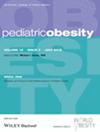Mediation of genetic susceptibility to obesity through eating behaviours in children
Abstract
Background/Objectives
Few studies have examined the putative mediating role of eating behaviours linking genetic susceptibility and body weight. The goal of this study was to investigate the extent to which two polygenic scores (PGSs) for body mass index (BMI), based on child and adult data, predicted BMI through over-eating and fussy eating across childhood.
Subjects/Methods
The study sample involved 692 participants from a birth cohort study. Height and weight were measured on six occasions between ages 6 and 13 years. Over-eating and fussy eating behaviours were assessed five times between ages 2 and 6 years. Longitudinal growth curve mediation analysis was used to estimate the contributions of the PGSs to BMI z-scores mediated by over-eating and fussy eating.
Results
Both PGSs predicted BMI z-scores (PGSchild: β = 0.26, 95% CI: 0.19–0.33; PGSadult: β = 0.34, 95% CI: 0.27–0.41). Over-eating significantly mediated these associations, but this mediation decreased over time from 6 years (PGSchild: 18.0%, 95% CI: 3.1–32.9, p-value = 0.018; PGSadult: 14.2%, 95% CI: 2.8–25.5, p-value = 0.014) to 13 years (PGSchild: 11.4%, 95% CI: −0.4-23.1, p-value = 0.057; PGSadult: 6.2%, 95% CI: 0.4–12.0, p-value = 0.037). Fussy eating did not show any mediation.
Conclusions
Our results support the view that appetite is key to translating genetic susceptibility into changes in body weight.


 求助内容:
求助内容: 应助结果提醒方式:
应助结果提醒方式:


